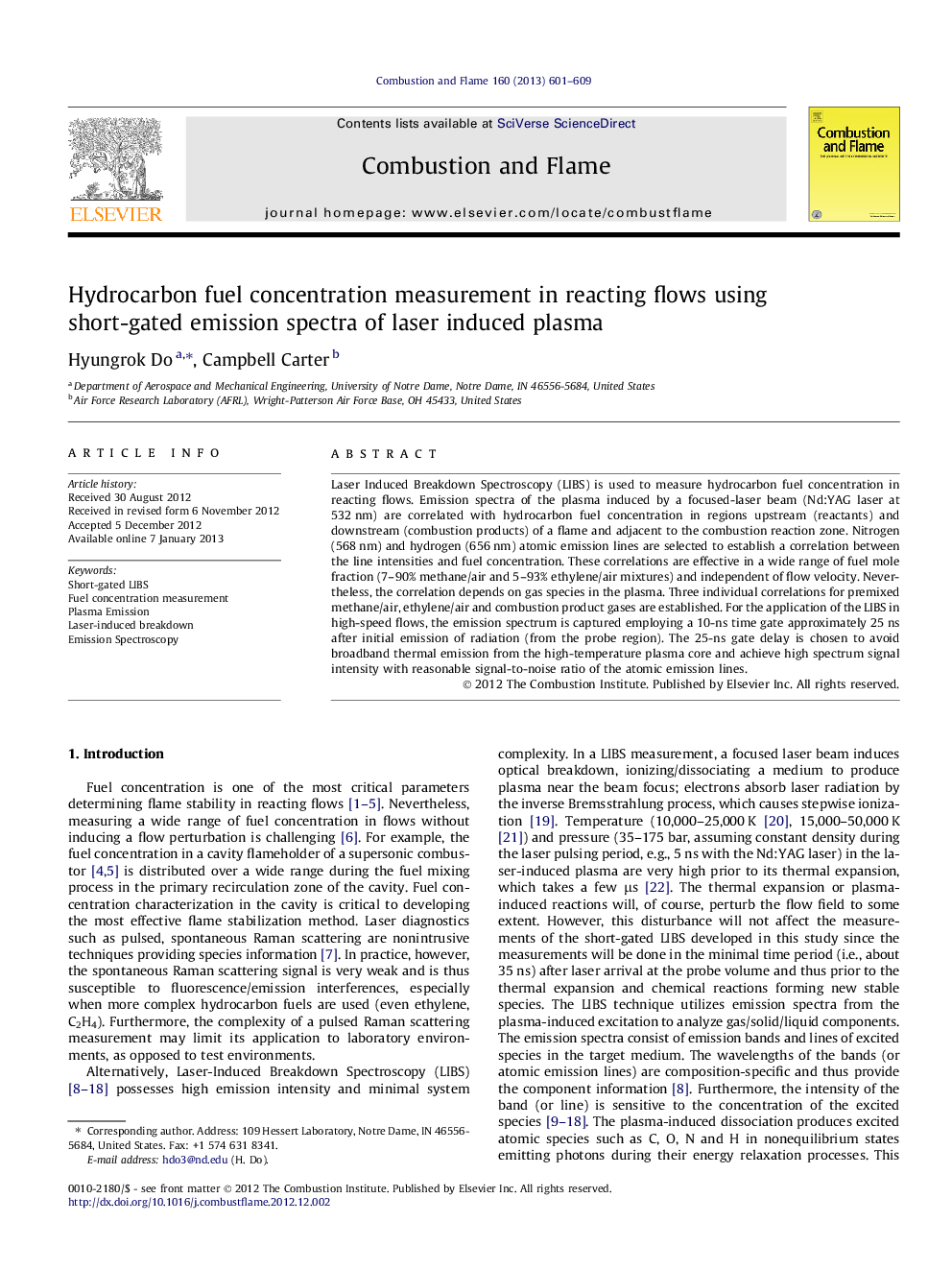| Article ID | Journal | Published Year | Pages | File Type |
|---|---|---|---|---|
| 167027 | Combustion and Flame | 2013 | 9 Pages |
Laser Induced Breakdown Spectroscopy (LIBS) is used to measure hydrocarbon fuel concentration in reacting flows. Emission spectra of the plasma induced by a focused-laser beam (Nd:YAG laser at 532 nm) are correlated with hydrocarbon fuel concentration in regions upstream (reactants) and downstream (combustion products) of a flame and adjacent to the combustion reaction zone. Nitrogen (568 nm) and hydrogen (656 nm) atomic emission lines are selected to establish a correlation between the line intensities and fuel concentration. These correlations are effective in a wide range of fuel mole fraction (7–90% methane/air and 5–93% ethylene/air mixtures) and independent of flow velocity. Nevertheless, the correlation depends on gas species in the plasma. Three individual correlations for premixed methane/air, ethylene/air and combustion product gases are established. For the application of the LIBS in high-speed flows, the emission spectrum is captured employing a 10-ns time gate approximately 25 ns after initial emission of radiation (from the probe region). The 25-ns gate delay is chosen to avoid broadband thermal emission from the high-temperature plasma core and achieve high spectrum signal intensity with reasonable signal-to-noise ratio of the atomic emission lines.
